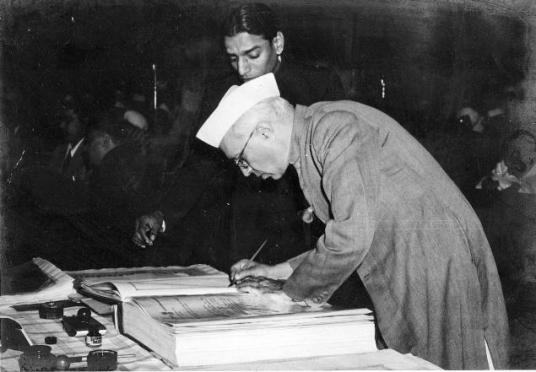January 26 in History
1950 – The Constitution of India comes into force, forming a republic
The Constitution of India, the longest written constitution of any country on earth, was adopted by the Constituent Assembly of India on November 26, 1949 and became effective on this day in 1950. The Constitution replaced the Government of India Act 1935 as the country’s fundamental governing document, and the Dominion of India became the Republic of India, with Rajendra Prasad is sworn in as the first President of India.
The supreme law of India, the Constitution lays down the framework demarcating fundamental political code, structure, procedures, powers, and duties of government institutions and sets out fundamental rights, directive principles, and the duties of citizens. Dr. B. R. Ambedkar, chairman of the drafting committee, is widely considered to be its chief architect. It imparts constitutional supremacy (not parliamentary supremacy, since it was created by a constituent assembly rather than Parliament) and was adopted by its people with a declaration in its preamble. Parliament cannot override the Constitution. The Constitution declares India a sovereign, socialist, secular, democratic republic, assuring its citizens justice, equality and liberty, and endeavours to promote fraternity. The original 1950 constitution is preserved in a helium-filled case at the Parliament House in New Delhi. The words ‘secular’ and ‘socialist’ were added to the preamble in 1976 during the Emergency.
-Wikipedia
Photo Caption- Jawaharlal Nehru the first Prime Minister of India signing the constitution in 1950 – Wikipedia


